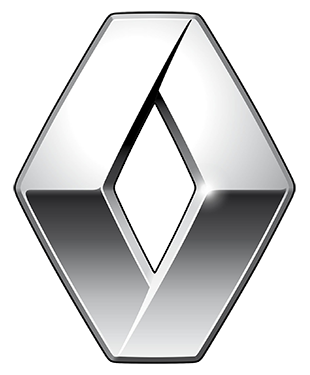
Renault
Renault was the eleventh biggest automaker in the world by production volume, with 50.5% of sales coming outside of Europe. The Renault–Nissan Alliance is the fourth-largest automotive group.
Louis Renault and his brothers founded their company in 1898, and they quickly made a name for themselves in racing, where they won a number of victories with their small cars. Renault factories introduced mass production techniques in 1905 and Taylorism in 1913. During the First World War, the company produced trucks, stretchers, ambulances, grenades and even the famous FT17 tanks, which played a decisive role in the final victory.
Renault modernized its plant and started up its first production line in Billancourt in 1929. The company tries to keep costs down to survive the economic crisis. But social conditions worsen. Louis considers World War II and the conflict with Germany a mistake and gives in to the demands of the German forces. As a result, Renault was nationalized in 1945 and transformed into the Régie Nationale des Usines Renault (RNUR).
Renault, now a national company, modernized its plants and built and purchased new production facilities. The attempt to conquer the U.S. market failed, but Renault nevertheless continued its international expansion. The 4CV, the first "small car for everyone," was a success, followed by the Renault 4 and the Renault 5....Then the company launched an upscale model, the Renault 16, the first "voiture à vivre" (literally, "car to live in"). At the same time, the company continues to achieve impressive results in rally racing.
The company continues to grow until the early 1980s. The renewal of the product range is accelerated with the introduction of two upscale models: Renault 25 and Espace. The brand made a name for itself in motorsports and entered Formula 1. But the company was making heavy losses. Thanks to a drastic cost-cutting policy and concentration on core competencies, Renault was back in the black in 1987.
Renault considered a merger with Volvo, but the project was dropped in 1993. The privatization of the company in July 1996 was a milestone in the company's history. Renault took advantage of its newfound freedom and acquired a stake in Nissan in 1999. The company continued to innovate and renew its product range with vehicles such as the Mégane and Laguna. Success in Formula 1 strengthened the Renault brand's profile. The Renault-Nissan Alliance is consolidating its structure and continuing to develop new synergies. Renault accelerates its international expansion with the acquisition of Samsung Motors and Dacia. The launch of the Logan was an important part of the strategy to develop emerging markets.
Renault VIN plate location: where to find?
Your Renault VIN should appear on your vehicle registration and insurance documents, but you can also find it on the car itself. Check these places:
The VIN number on a LHD (left-hand-drive) car is located at the base of the windscreen on the driver side of the vehicle in used car models.
The VIN number on a UK (right-hand drive) car is located at the base of the windscreen on the passenger side of the vehicle in used car models.
The chassis number can also be found under the bonnet of the vehicle stamped / printed near the top of the suspension mounting.
The Renault VIN number should be similar in structure to WMWRA32070TB00081